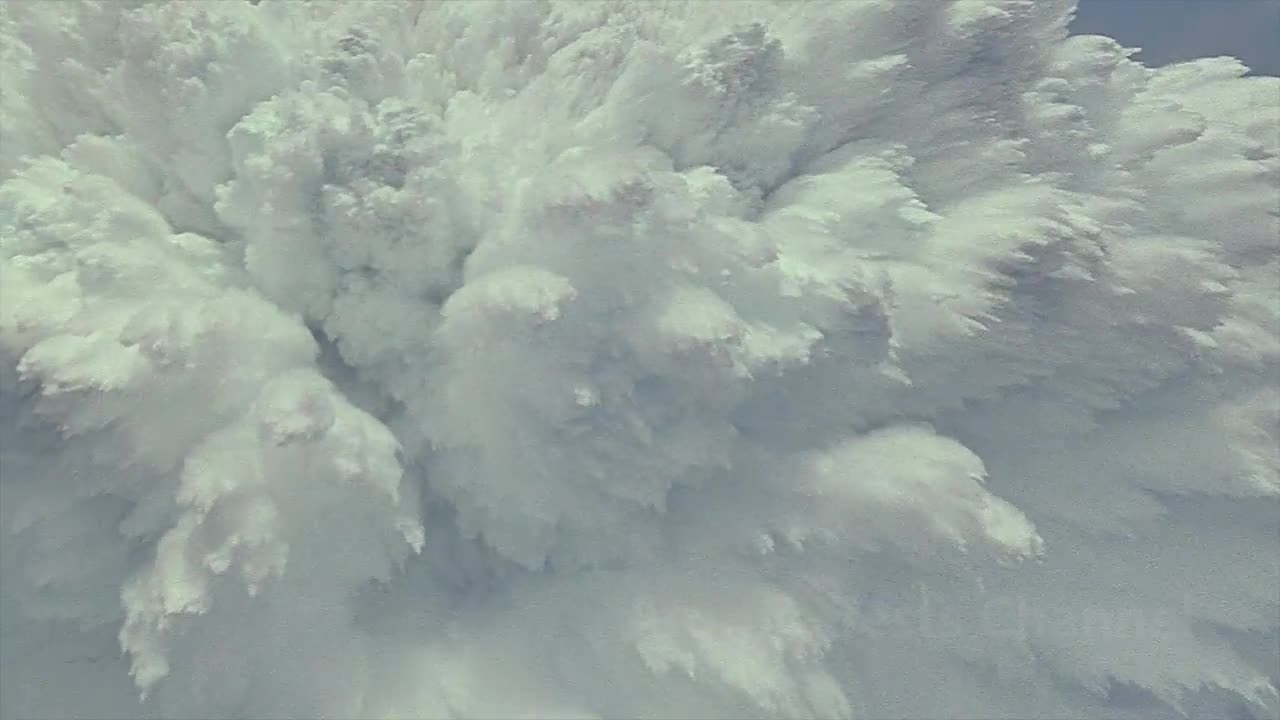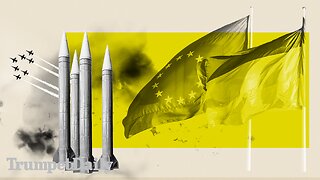Premium Only Content

Unedited 150-Meter Footage of the 1958 Underwater Atomic Blast
ChatGPT
On May 16, 1958, the conditions for the Wahoo nuclear blast test were met, leading to the detonation of the nuclear device. Within one second of the detonation, a remarkable spray dome emerged, soaring to an astonishing height of 840 feet (260 meters) after just seven seconds. The spray dome took on the shape of a cone with sloped sides at a 45-degree angle. Plumes broke through the spray dome after six seconds, radiating outward in all directions. The vertical plume continued its ascent for 12 seconds following the blast, while the lateral plumes extended for 20 seconds before collapsing. By the 20-second mark, the spray dome's diameter had expanded to approximately 3,800 feet (1,200 meters).
The base surge, traveling in the downwind direction, reached a radius of 8,000 feet (2,400 meters) just 1.7 seconds after the blast. Aided by a 15-knot (17 mph; 28 km/h) wind, the downwind surge achieved speeds of 21 knots (24 mph; 39 km/h). This base surge remained visible for three and a half minutes, lingering longer when observed from the air as it continued its course across the ocean. Once the spray dome and base surge dissipated, a foam patch emerged, stretching from the point of the blast on the water's surface to cover over 6,000 feet (1,800 meters).
The nuclear blast was calculated to be equivalent to 9 kilotons of TNT (38 TJ). Remarkably, all fallout remained within the predicted fallout area, with a maximum radiation level of 0.030 R/hr. The target ship, positioned at 5,900 yards (2.9 nautical miles; 3.4 miles; 5.4 kilometers) from the epicenter, directly absorbed the shockwave, causing the entire ship to vibrate and shake violently. The Moran merchant marine ship, anchored at a distance of 2,346 feet (715 meters), was immobilized due to shock damage inflicted upon its main and auxiliary equipment, in addition to experiencing minor hull damage.
One hour and ten minutes after the detonation, a water sample, taken directly above the blast site, registered a radiation level of 5 R/hr. Remarkably, the retrieval team entered a field with a radiation level of 3.8 R/hr just one hour and thirty-five minutes after the detonation
-
 LIVE
LIVE
Jeff Ahern
1 hour ago $0.86 earnedNever Woke Wednesday with Jeff Ahern (big time speech)
638 watching -
 39:10
39:10
Producer Michael
19 hours agoINSIDE AN INSANE MIAMI SUPERCAR COLLECTION!
28.5K3 -
![Dems Proved They Hate America & Angry They Can’t Lord Over All Americans [EP 4461-8AM]](https://1a-1791.com/video/fwe2/9c/s8/1/0/2/G/p/02Gpy.0kob-small-Dems-Proved-They-Hate-Ameri.jpg) LIVE
LIVE
The Pete Santilli Show
11 hours agoDems Proved They Hate America & Angry They Can’t Lord Over All Americans [EP 4461-8AM]
1,698 watching -
 12:32
12:32
Melonie Mac
21 hours agoAmouranth 2A's Intruder
30.8K28 -
 16:39
16:39
Scammer Payback
16 hours agoNo Mercy for this Scammer
26.8K12 -
 31:19
31:19
Uncommon Sense In Current Times
17 hours ago $3.87 earned"The Truth About Government Waste: How USAID is Failing & What Christians Must Do w/ Cheryl Chumley"
26.8K5 -
 1:00:32
1:00:32
Trumpet Daily
22 hours ago $4.59 earnedA Dangerous Era of Rearmament - Trumpet Daily | Mar. 4, 2025
25.3K8 -
 3:25
3:25
Gun Drummer
23 hours ago $1.37 earnedDrowning Pool - Bodies, Gun Cover
22.6K13 -
 8:04
8:04
New York Post
1 day agoEXCLUSIVE: Was President Trump's would-be assassin Thomas Crooks part of a larger conspiracy?
25.7K17 -
 3:06:37
3:06:37
TimcastIRL
14 hours agoLIVE: Trump Joint Presidential Address, IRS To Fire 45,000 Staff w/Rachel Wilson | Timcast IRL
454K359